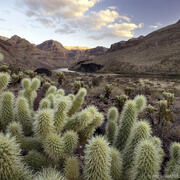Building drought early warning systems for fisheries and water management across the U.S.
Integrated Water Availability Assessments
USGS Science Collaboration Portal for the Colorado River Basin
Connecting Science to Help Mitigate Drought
Monitoring Vegetation Drought Stress
Drought Early Warning System (DEWS)
Drought Research at the Climate Adaptation Science Center
What is streamflow drought?
Drought
Extreme drought felt by many U.S. communities has far-reaching economic and health impacts on water for people, agriculture, industry, and the nation’s natural resources. Land and water managers use USGS science to better understand the complex interactions that determine the magnitude and impact of drought on water availability and ecosystems.
Looking for data?
Drought-related data catalogs and portals are listed below. If applicable, the links will pre-populate a search for drought on each site. Refer to sidebar for drought Web Tools and Software.






